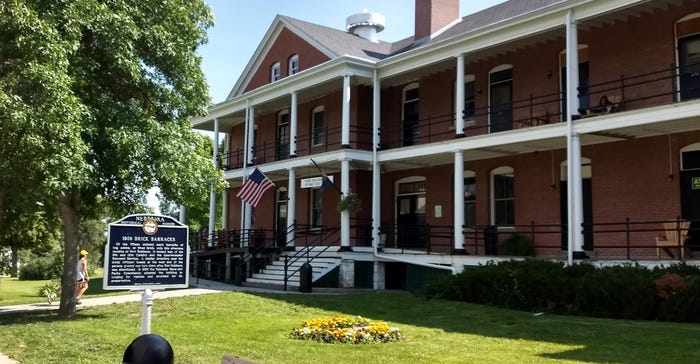
If you have ever visited Fort Robinson State Park in Sioux County, the 22,000-acre crowned jewel of Nebraska’s state park system in the West, you likely remember its history and beauty.
Western history enthusiasts know Fort Robinson, 3 miles west of Crawford along U.S. Highway 20, has a storied 74-year military presence on the Plains. Few know that after it was decommissioned by the U.S. Army in 1948, the fort was turned over to USDA for use as a beef cattle research station.
In addition to conducting beef trials, which included studying crossbreeding effects on heterosis, the former military outpost was used from 1954 until 1964 as a Soil Conservation Service Training Center. In the 1950s, many of the historic old outpost buildings were demolished.
The first parcel of the old fort was acquired for preservation by the Nebraska Game and Parks Commission in 1955. The Nebraska State Historical Society opened Fort Robinson Museum. By 1971, beef trials were moved to the USDA Meat Animal Research Center at Clay Center, Neb. Fort Robinson State Park opened one year later.
The story starts in 1874 when acting agent Frank Appleton was killed by a warrior at the Red Cloud Agency along the White River, and Lt. Levi Robinson was killed by a Native American band while escorting a wood detail from Fort Laramie. An army expedition left Fort Laramie to protect the agency, setting up a tent camp that evolved into Fort Robinson.
Celebrated Oglala Sioux Indian chief Crazy Horse surrendered at the fort in May 1877. That September, while being moved into confined quarters, Crazy Horse was killed by bayonet by one of the guards.
Two years later, Dull Knife’s group of Northern Cheyenne broke away after being held at Fort Robinson under harsh conditions. A running fight to recapture the band left 64 Cheyenne and 11 soldiers dead.
From 1885 until 1907, the fort served as headquarters for the Buffalo Soldiers — famed African American cavalry regiments. During and after World War I, Fort Robinson served as the world’s largest training, care and breeding center for army horses and mules.
U.S. Olympic Equestrian teams trained at the fort from 1935 to 1939. At the onset of World War II, the fort changed missions again, serving as a war dog reception and training center, as well as a prisoner-of-war camp housing mostly German POWs.
Today, Fort Robinson, except for modern amenities, looks much like it did in its military heyday. Stately housing that once served post officers and soldiers now provides lodging for park guests.
Visitors can dine in the historic lodge, take a rugged Jeep ride to the top of Cheyenne buttes, enjoy a trail ride through adjacent hills, or bump along in a memorable stagecoach ride. There are miles of scenic hiking and equestrian trails, the Fort Robinson Museum operated by the Nebraska State Historical Society, and a Trailside Museum operated by the University of Nebraska.
Fort Robinson served multiple purposes as a U.S. Army outpost, and in subsequent years as a beef research station. When you visit the fort today, you can’t help but walk onto the gigantic parade grounds and visualize what it must have been like when soldiers were garrisoned there, and the outpost was bustling with military activity.
Learn more about Fort Robinson online at outdoornebraska.gov/fortrobinson.
About the Author(s)
You May Also Like






